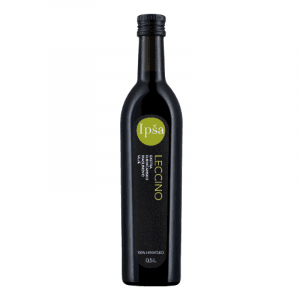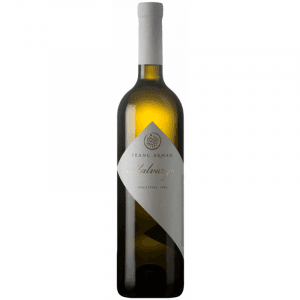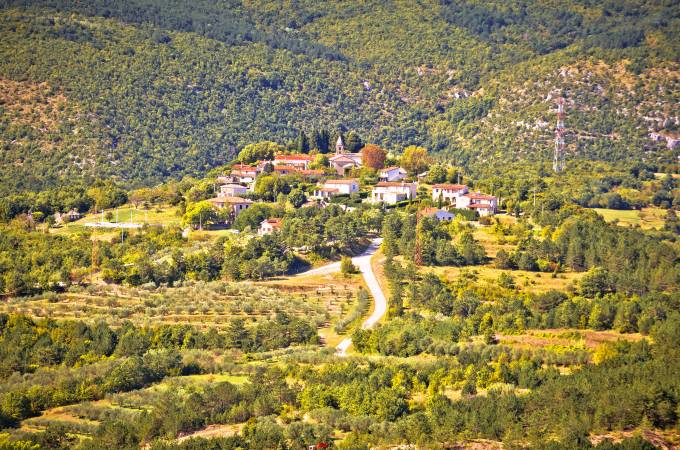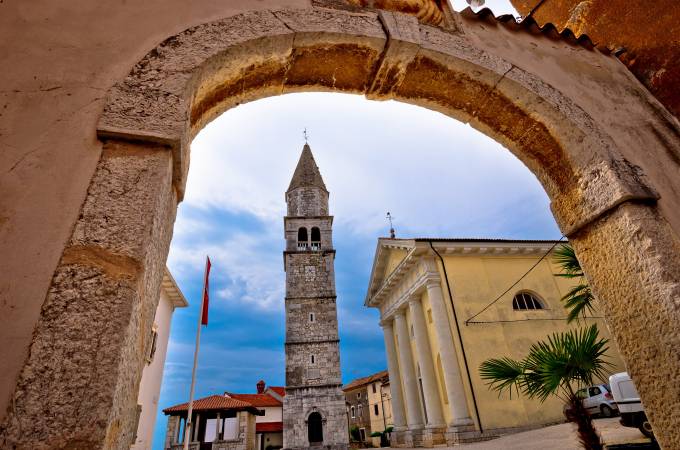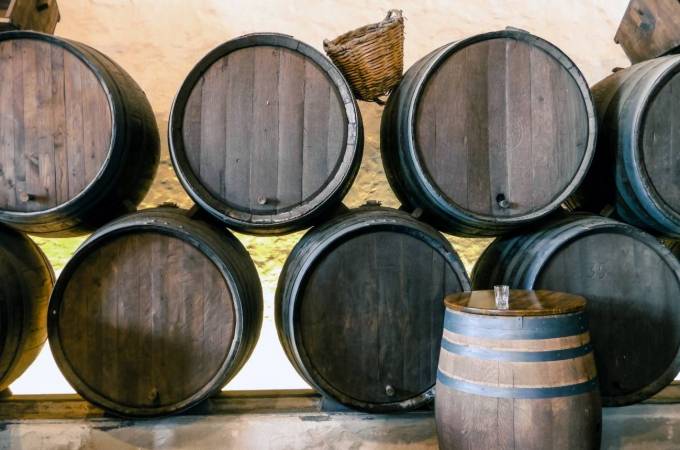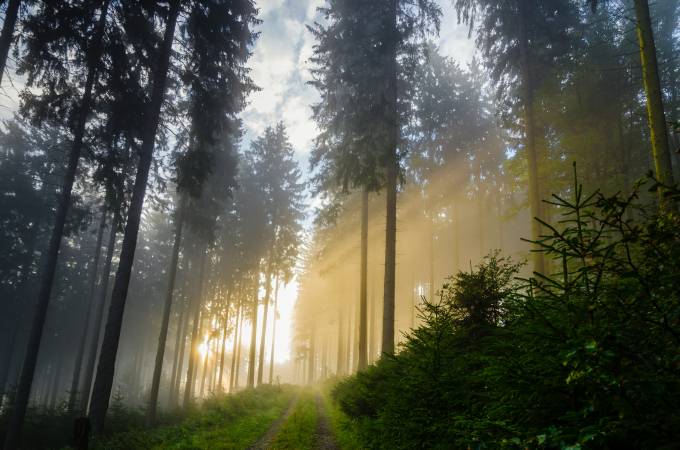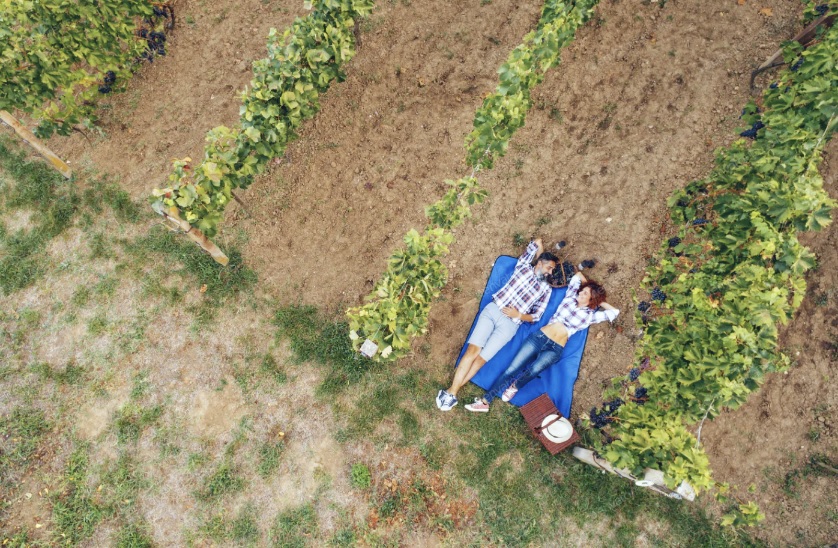Culture
Istria and Italy: From Ancient Rome to Today

Due to the position and mutual proximity, almost every part of Istrian history is in some way characterized by encounters with nations, countries and kingdoms from from territory of today’s Italy. Those encounters left their marks in architecture, monuments and culture. Through the list of landmarks worth visiting, we are giving you a short overview of this dynamic connection between the regions throughout history.
Ancient times: Roman Empire in Istria
Roman times in Istria began in 177. B.C., when the Romans conquered Nesactium, the center of Histri, located close to today’s city of Pula. With the arrival of the Romans, former ways of life were changed: there was a surge in literacy, roads and seaports were built, division of the land was established (centuriation), cultivation of olives and grapevine, stone exploitation, production of salt, amphorae and building material were being reinforced.
In Pula, which was a Roman colony from 46-45B.C., you will probably find most monuments from that era. There are so many valuable ones that, at the time, even Michelangelo came to Pula to study them, but we will now mention only a few. The oldest among them is The Door of Hercules (Porta Ercole), which dates back to the time of Julius Caesar. However, most of the monuments originate from the era of the first Roman emperor, Augustus, who turned Pula into an imperial city. If you walk through the Arch of the Sergii and continue down the eponymous street, you will come to the Forum, the center of ancient lifestyle, and the Temple of Augustus.
If you continue further, the road will take you to the biggest and most famous of all the monuments in Pula: the Arena. The monumental edifice was built in the times of emperor Vespasian and is the sixth largest amphitheater in the world. What then was a place of gladiator fights and other brutal forms of entertainment, today serves as a home to culture, music, and film. Similarly is nowadays used the quarry in Vinkuran, Cave Romane, from which originates the stone used to build the Arena. In the place where once the sound of stone breaking was echoing, nowadays you can hear the music from artists who perform in this unique ambiance.
In Roman times, on Istrian peninsula many villas were built, some of which were country houses, and some that were producing ceramics, wine, and oil. If you sail to Brijuni, islands that are filled with remains from the Roman era, in the Verige bay on the island of Veliki Brijun you can find the biggest ancient complex, family Laecanii’s sumptuous villa.
Another important Roman colony, alongside Pula, was Colonia Iulia Parentium, today's Poreč. This romantic town lays on a Roman urban plan with a typical layout of the main streets which spread in directions North-South (cardo) and East-West (decumans). The beating heart of the town Poreč, a street you can't miss, filled with monuments, restaurants, coffee, and souvenir shops, is up to this day Dekumanova, in Roman times known as Decumanus Maximus. Besides traditional Roman streets, in Poreč on Marafor square you can visit the remains of the Temple of Neptun, Diana, and, so-called, Big Temple.
The Middle Ages and Early Modern Era: Venice in Istria
In the second half of the 5th century The Western Roman Empire collapsed, Istria fell under the rule of Ostrogoths, then Byzantium, at the end of the 6th century the Slavs started arriving, and at the end of the 8th century, the French and feudalism arrived. In the 13th century a new political force began to show interest in Istrian territory: Venice. It gradually and peacefully occupied the western part of Istria and ruled till the end of the 18th century.
The Republic of Venice had never occupied the whole Istria. In fact, this period of time was marked by Istria being divided into Venetian and Austrian parts, where, to put it very simply, inland of Istria was under the rule of Austria, and the rest of it under the rule of Venice. The time was marked by wars, plague, malaria, droughts, and conflicts between inhabitants of Istria alongside the border of its two parts.
However, despite all the adversities, La Serenissima left a mark in Istrian architecture and art. Venetian architects and stonemasons worked here, also local craftsmen forged crafts in Venice and brought home the acquired knowledge. The Venetian mark is visible in the streets and squares of Istrian towns, on the windows and balconies of multi-story houses.
The most obvious sign that Venice ruled Istria is the winged lion of St. Mark, the symbol and protector of the Venetian Republic. You will find it on the walls of almost all cities that were under Venetian rule: Poreč, Motovun, Umag… Labin hides five, while in Sveti Lovreč, along with the lions, you'll find many other remnants of Venice, given that this small town was the seat of its military authority in Istria. In Rovinj, a lion is carved at the main entrance to the old town, and one adorns the town clock. Rovinj itself, the jewel of the Istrian coast, abounds in Venetian heritage. The most famous is probably Saint Euphemia, a baroque church whose appearance is credited to several Venetian architects, blacksmiths, stonemasons, and organ builders.
Of course, there is also Svetvinčenat, a town in the heartland of Istria, which exudes Venetian style with its town square, houses, well, and in the center of which proudly stands now-famous castle Morosini-Grimani.
Modern era: The Kingdom of Italy and liberated Istria
The Republic of St. Mark ceased to exist in the 18th century, and its Istrian territory was given to Austria. What followed was the age of Napoleon, then again of Austria. That period is marked with revolutions and national movements, both in Europe in general and in Istria, where Croatian national identity begins to form.
Slowly came the 20th century, the first half of which cast a shadow of pain over the world. Between the two world wars, Istria found itself under the rule of The Kingdom of Italy. This period of time is, unfortunately, associated with memories of oppression and fascism. Nevertheless, it was then that the issue, which made Istria throughout centuries poor and hard to live in, was solved. That is, during the rule of Italy, one of the biggest infrastructural projects in Istria was started and completed: the Istrian water supply system, thanks to which Istria came to be greener and which still irrigates numerous fields, olive groves, vineyards and pastures.
After World War II, liberation and becoming part of Yugoslavia, and afterward the Republic of Croatia, Istria became a wealthy and developed region which we today know and love. It is the region where the history of coexistence of cultures (more or less successful through time) can be seen in its demography, multiculturality, multilingualism, and antifascistic heritage. Furthermore, it is a region that embraces its legacy completely and, thanks to it, once again attracts nations and cultures from all around the world.
